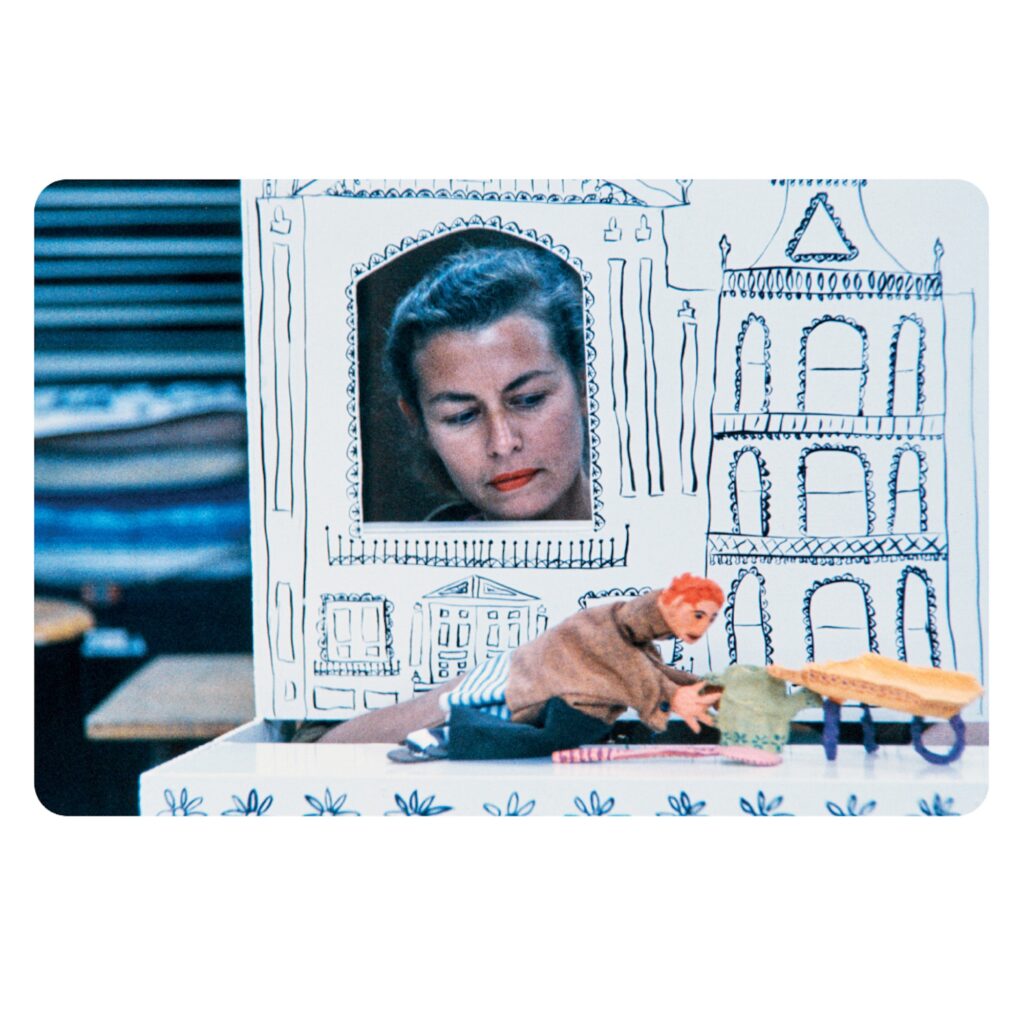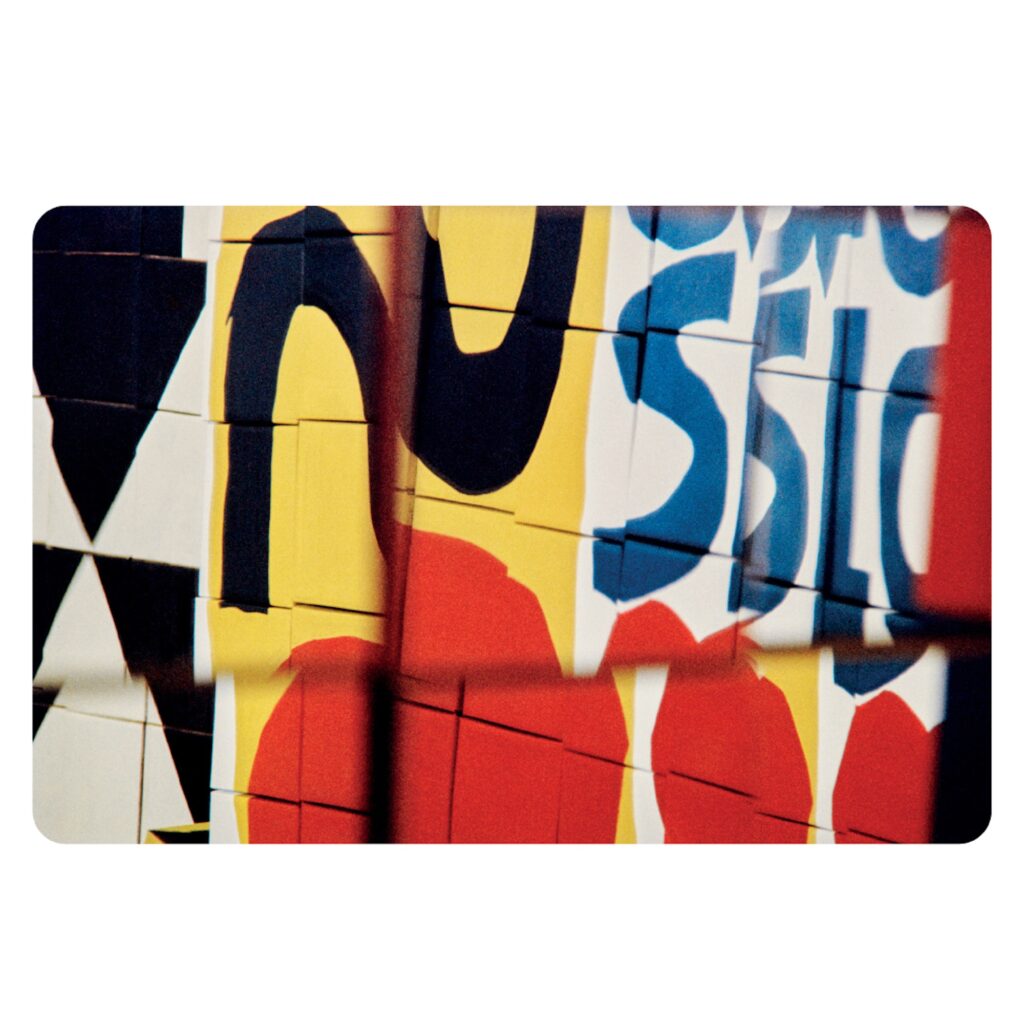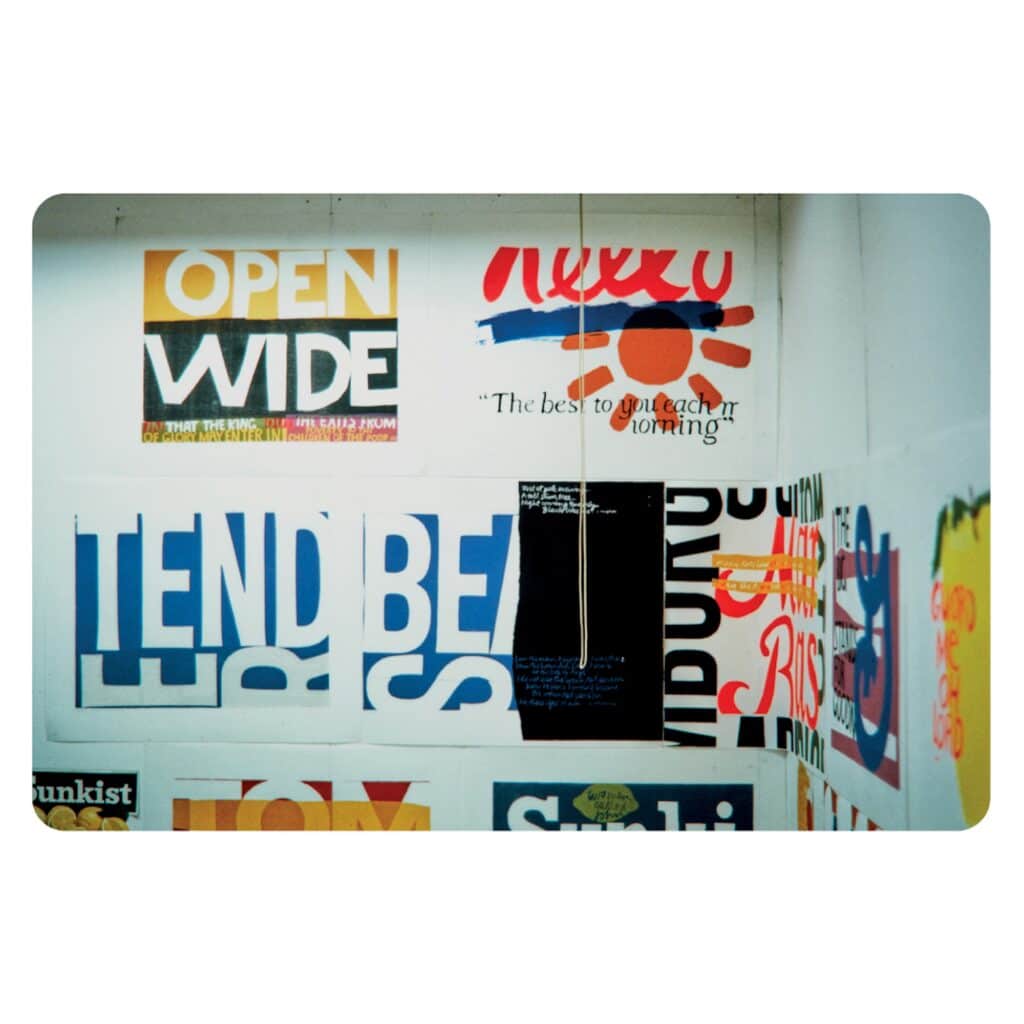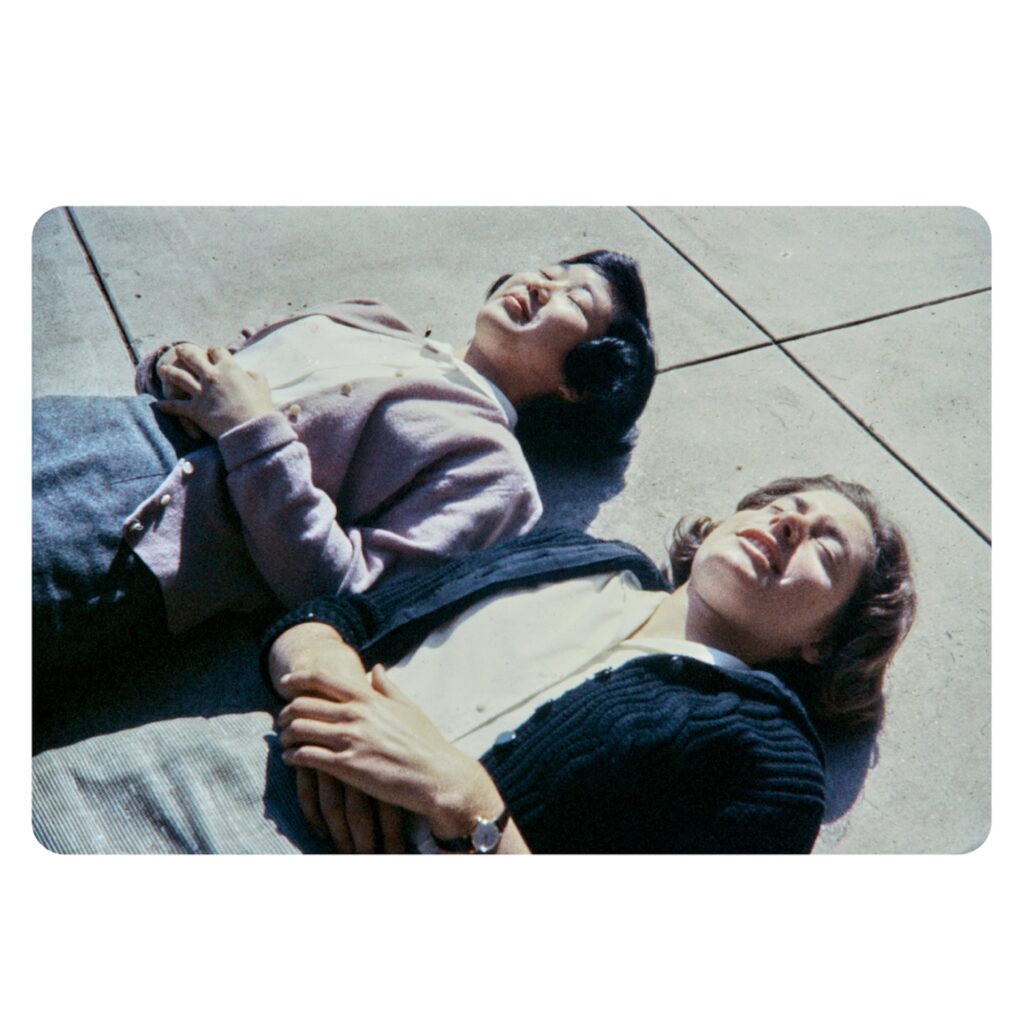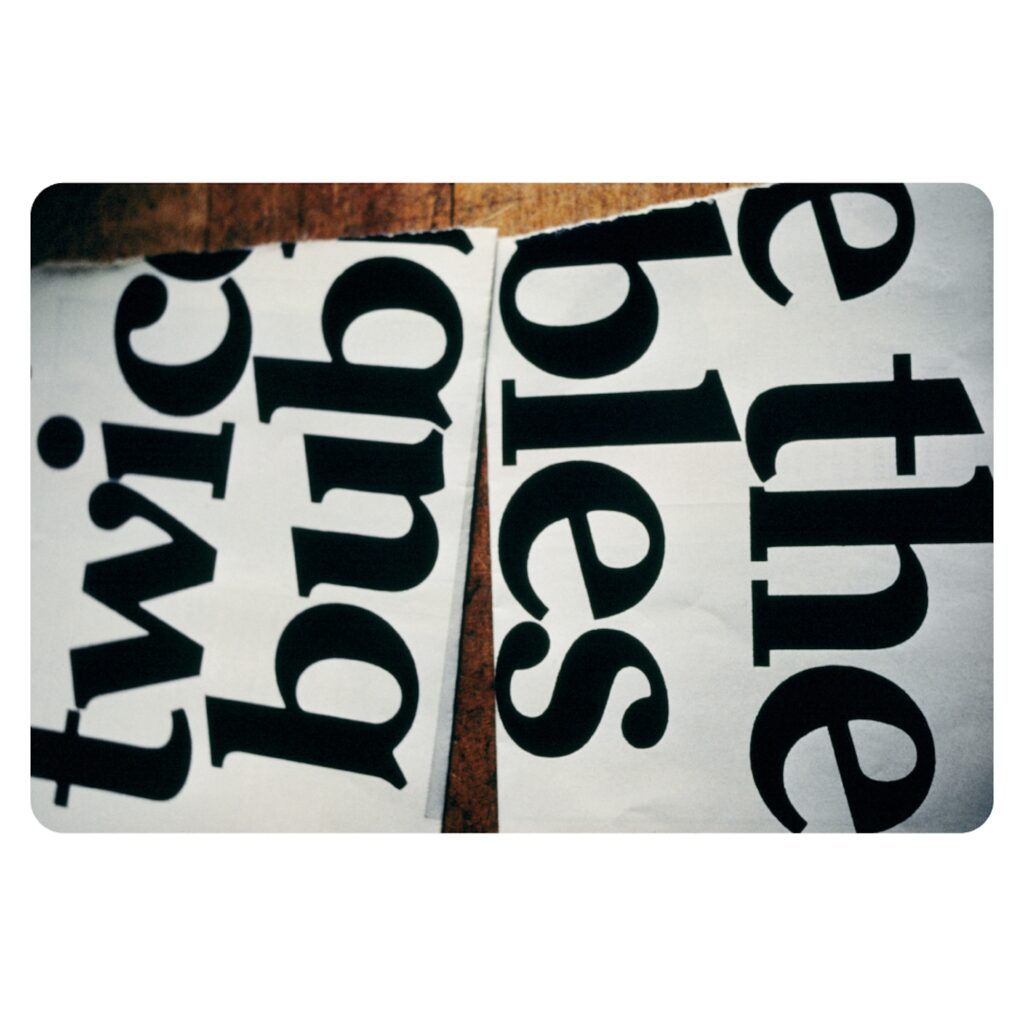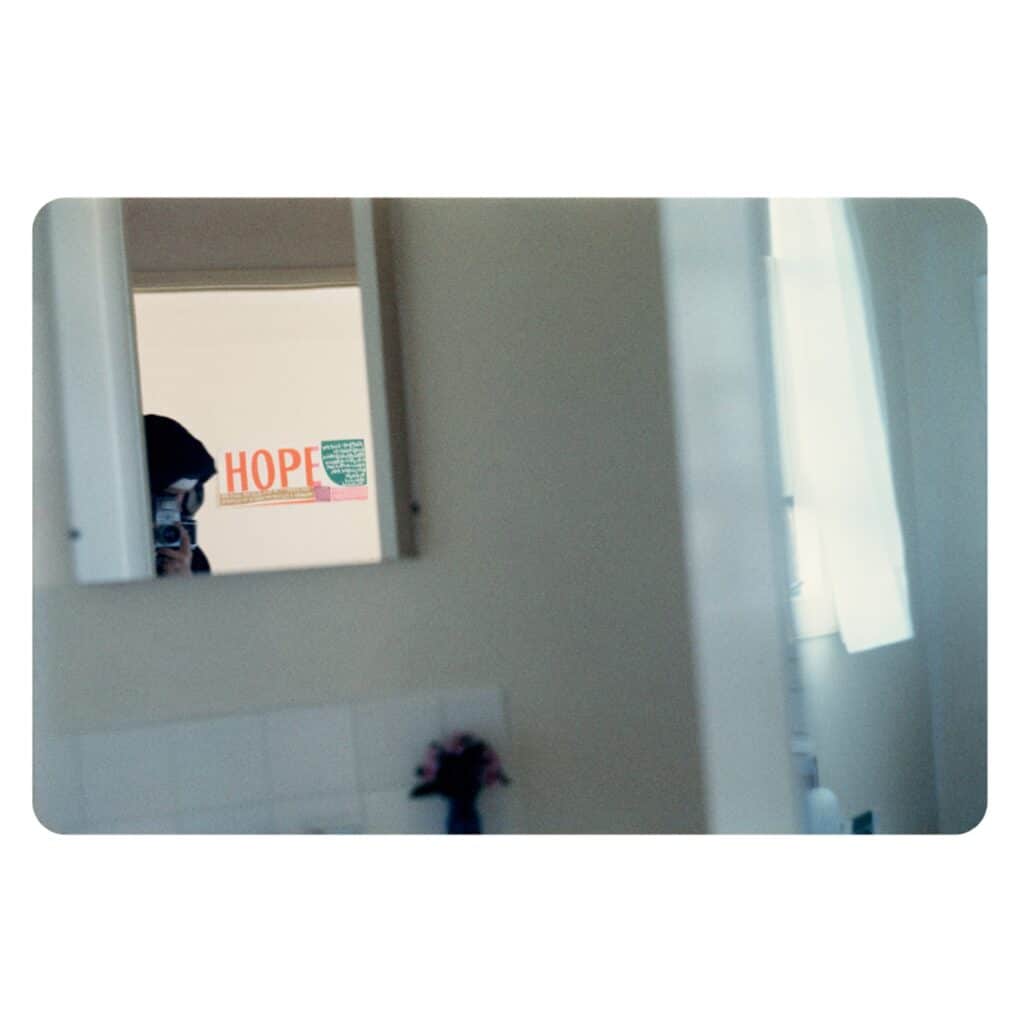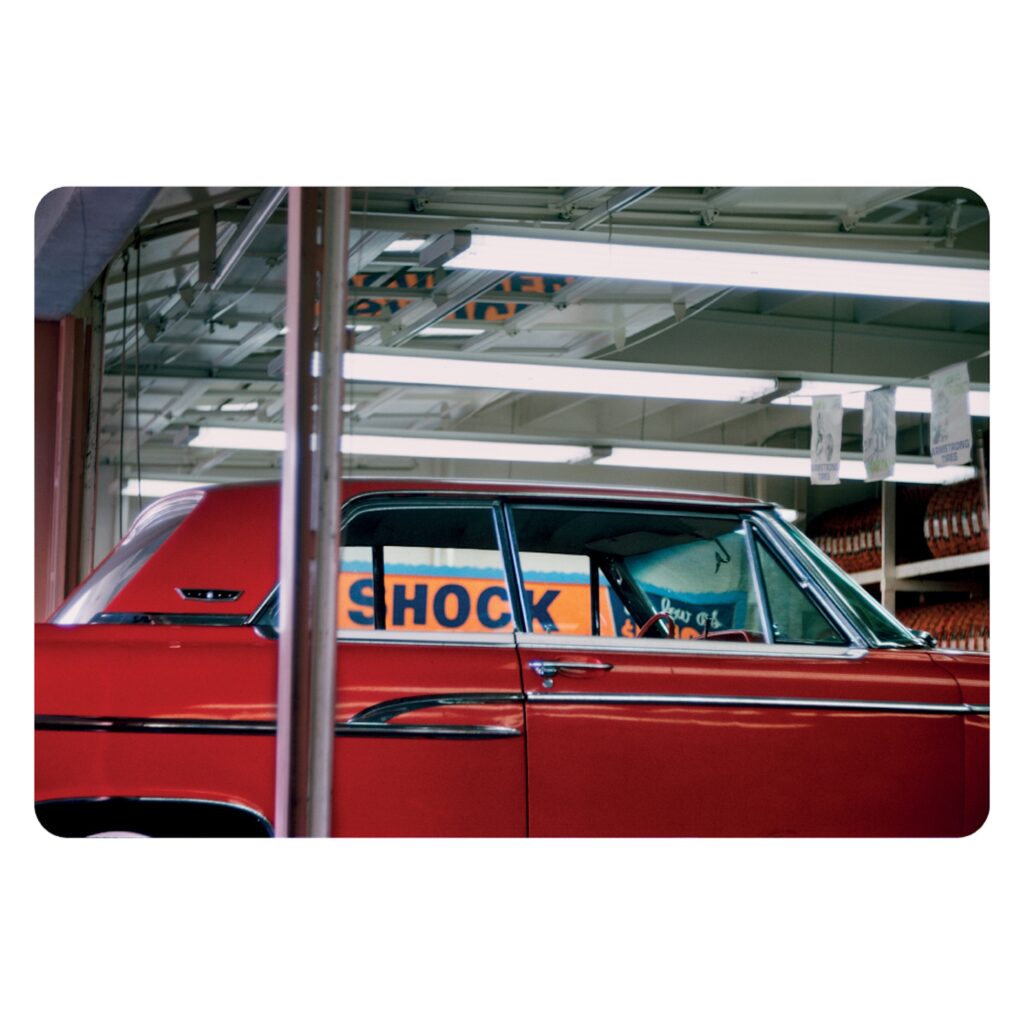Perhaps it’s a childhood spent on the streets of Hollywood during the 1920s that inspired young Frances Elizabeth Kent to integrate art, photography, performance, and design into her work as Corita Kent, the former Catholic nun who turned the Church upside down in the 1960s.
After graduating high school in 1936, Kent joined Immaculate Heart of Mary (IHM), the largest religious community in Los Angeles, and took the name Sister Corita (“Little Heart”). In 1947 she began teaching art at Immaculate Heart College in LA while pursuing her Master’s Degree in art history.
In the early 1950s, Kent became interested in screen printing and naturally gravitated towards the work of Andy Warhol and the burgeoning Pop Art movement. During her tenure at Immaculate Heart College during the 1950s and ‘60s, she made thousands of 35mm color slides documenting scenes from everyday life with her signature sense of humor, wonder, and awe that embodies the shining hope of 1960s America.
“We’d consider going to the beach and flying kites an artistic experience, or watching the sun set with some kind of ceremony,” Kent says in Corita Kent: Ordinary Things Will Be Signs for Us. A deep dive into her dazzling archive, the book brings together sparkling scenes of mid-century Los Angeles that glow with the nostalgic hum of a whirling slide projector.
Amid the Los Angeles Avant Garde
Corita Kent’s impeccable eye brilliantly chronicles scenes of everyday life with the cinematic grandeur of a Billy Wilder film. Amid a sea of pastel day dresses and church hats, a flock of devotees have gathered for the annual celebration of Mary’s Day. Everywhere there are signs, fragments and font, splashes of eye-catching color that teases and toys, blended alongside curious symbols that are at once familiar and strange, not unlike Warhol’s Brillo boxes, which Kent photographed.
“I’m sure if I had been a nice proper housewife, I would not have bumped into all of these ideas.”
Kent used photography to document singular blend of pop art, protest, and devotion that is deeply in keeping with the teachings of Christ as a revolutionary force of justice and love. Drawing inspiration from Vatican II, the early 1960s council designed to modernize the Church, she transformed Immaculate Heart College into a center for the Los Angeles avant-garde, bringing filmmakers Alfred Hitchcock and Josef von Sternberg, composer John Cage, and designers Charles and Ray Eames to give talks to the students.
“I think living with people who were also socially conscious helped a lot,” she said. “I’m sure if I had been a nice proper housewife, I would not have bumped into all of these ideas. And of course once they get into you, you start noticing and expanding.
As an educator Kent understood the importance of empowering a new generation at a time when the nation was torn apart by politics and war. “We began to realize, along with everybody else, that what happened to the individual is largely what happens to the community,” she said, “and that if the individual is developed to her fullest extent, that can only be good for the other people that she’s working with or for.”
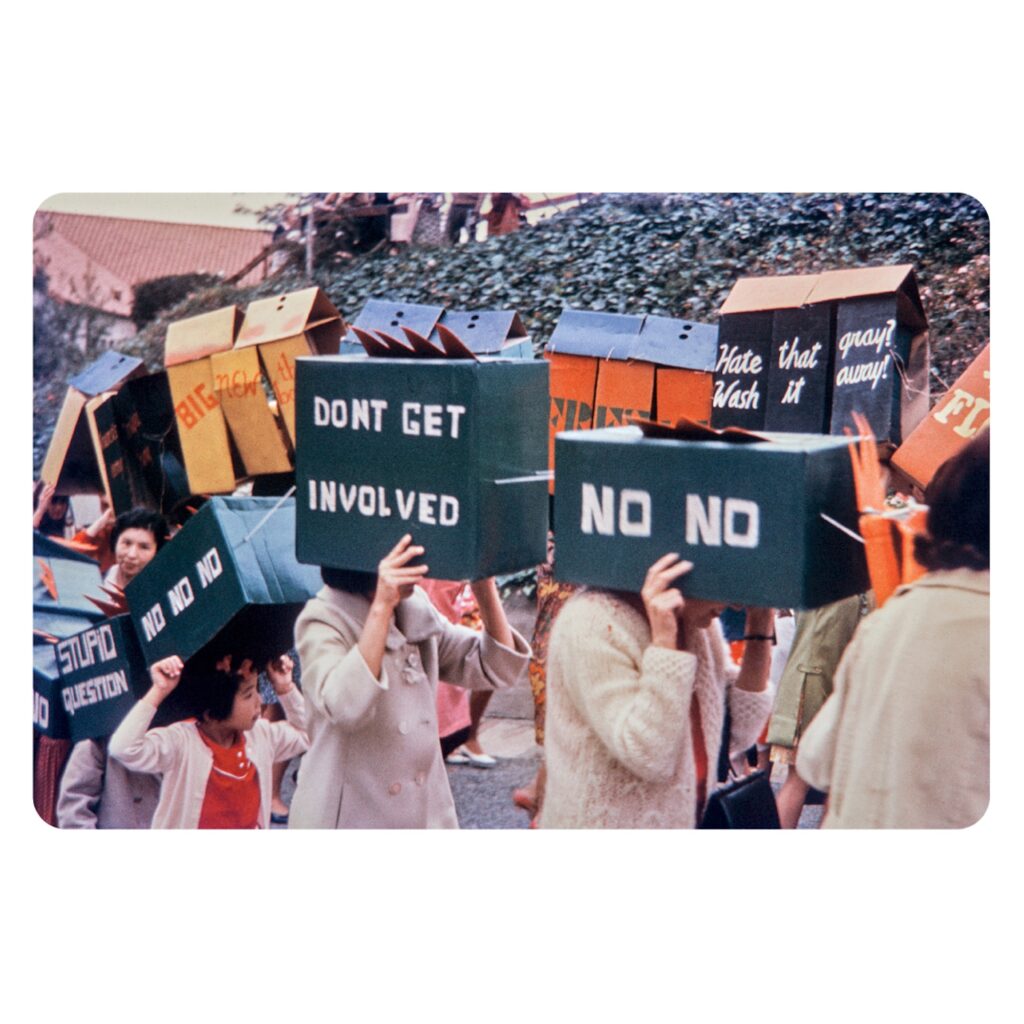
Faith, Hope and Love
As Sister Corita Kent became the symbol of a new era of American Catholicism, much to the ire of Los Angeles Cardinal James Francis McIntyre, who deemed her work sacrilegious. With the backing of the Vatican, McIntyre began a relentless campaign of suppression, crushing all efforts to modernize and driving from the order more than 350 of 400 sisters who refused to conform.
In 1968 Kent was on the brink of collapse and took a sabbatical, never to return. That November she was dispensed from her vows and embarked on a new chapter of her career, reaching even greater heights with her message of faith, hope, and love.
As Ordinary Things Will Be Signs for Us reveals, Kent’s gift lay in distilling the magical and miraculous experiences of beauty and grace that surround us if we choose to look. They exist in moments of connection and communion, be it with one another, the natural world, or the ineffable encounters with something greater still.
“I think I am always collecting in a way—walking down a street with my eyes open, looking through a magazine, viewing a movie, visiting a museum or grocery store,” Kent wrote in 1984. “Some of the things I collect are tangible and mount into piles of many layers, and when the time comes to use saved images, I dig like an archeologist through my lists and all the piles that have accumulated, and sometimes I find what I want and sometimes I don’t.”
Corita Kent: Ordinary Things Will Be Signs for Us is edited by Julie Ault, Jason Fulford and Jordan Weitzman with text by Olivian Cha, and published by J&L Books/Magic Hour, $45.


